Rochdale played host to Blackpool in League One on Saturday, with both sides having had impressive starts to the new season for various reasons. Dale have caught the eye thanks to the ultra-aesthetically pleasing style they have adopted under new manager Brian Barry-Murphy, while Pool remain unbeaten in the league, having collected ten points from their opening four matches before this clash.
A tight game that finished 0-0, with neither side truly asserting a great dominance on proceedings. In this tactical analysis, we look at the tactics of both teams and use our analysis to dissect their methods.
Lineups
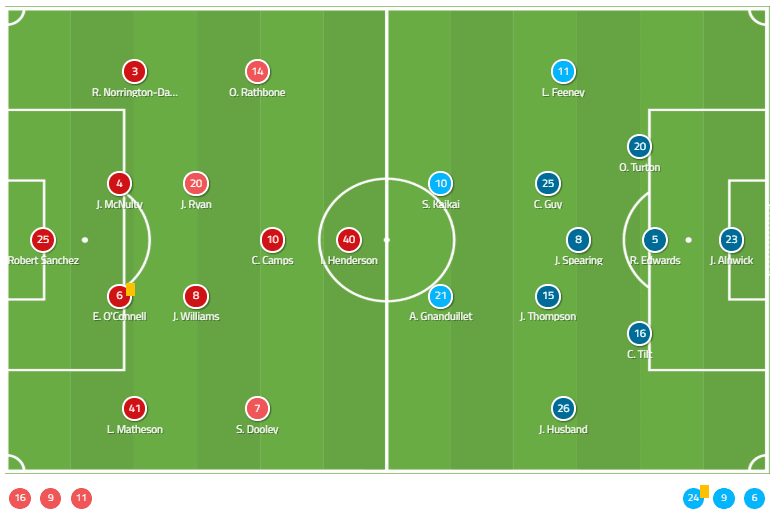
Rochdale lined up in a fluid 4-1-4-1 variant, with players having the freedom to rotate around and interchange positions depending on the situation. Four of the five midfielders were able to change the roles and areas they were taking up frequently, in order to try and drag around the Blackpool midfielders to open up spaces and gaps in the final third. The one defensive constant was Jordan Williams, who sat in front of the defence at all times to offer a licence for the more attack-minded players to express themselves – as we will examine in more detail later on. They made only one change from their midweek 1-2 loss at home to Sunderland, with former Blackpool captain Jimmy Ryan replacing Aaron Morley.
As for the Seasiders, they were set up by manager Simon Grayson in the 3-5-2 formation they have adopted so far this season, however due to an injury suffered by Nathan Delfouneso in their game against Gillingham on Tuesday night, were forced to operate without two out-and-out strikers. This meant attacking midfielder Sullay Kaikai had to be utilised alongside Armand Gnanduillet upfront with Callum Guy taking Kaikai’s position in the centre of midfield, and Grayson opting for a slightly more conservative option on paper with Guy being a more defensively-minded player. Also, James Husband returned from a three-match suspension to line-up at left wing-back, whilst Ollie Turton reverted to playing as a central defender having had to play as a left wing-back and central midfielder in recent games due to injuries and suspensions.
What did the stats say?
The possession in the match was relatively even, with Rochdale having 52.3% compared to Blackpool’s 47.7%. The relative defensive strength of both teams was also apparent, as both operated at a low xG – Dale’s being 0.34, and Blackpool’s 0.88. This fact of attacking impotence is backed up by there being just three shots on target all match – all for the visitors – with only 15 shots attempted overall (five for Rochdale and ten for Blackpool). As mentioned above, there has been a real effort by Barry-Murphy and his staff to implement a heavily possession-based style of play at the club, and as a result, they were able to complete 83.5% of their passes here – 6.8% more than Blackpool, whose efforts only registered a 76.7% completion rate.
Retention from deep and creation of space
As already alluded to, Rochdale’s attempts to retain the ball and try to construct attacks from their defensive third are impressive. Even when pressed, they constantly look to play the ball out from the back in order to stick to the principles given to them by their manager. In order to ensure they have as good a chance as possible at keeping the ball in this potentially dangerous area of the pitch, Williams would frequently drop in between the central defenders to create a makeshift back three. As a result of his natural position, and as such his quality on the ball, he can capitalise on the extra time and space he is afforded when he drops off. This allowed him to dictate play when on the ball and control the tempo and rhythm of Rochdale’s attacks. Additionally, should Blackpool have pressed with their front two, the presence of Williams would create a 4 v 2 situation (including the goalkeeper Robert Sanchez) and therefore give them the best possible chance of keeping the ball.
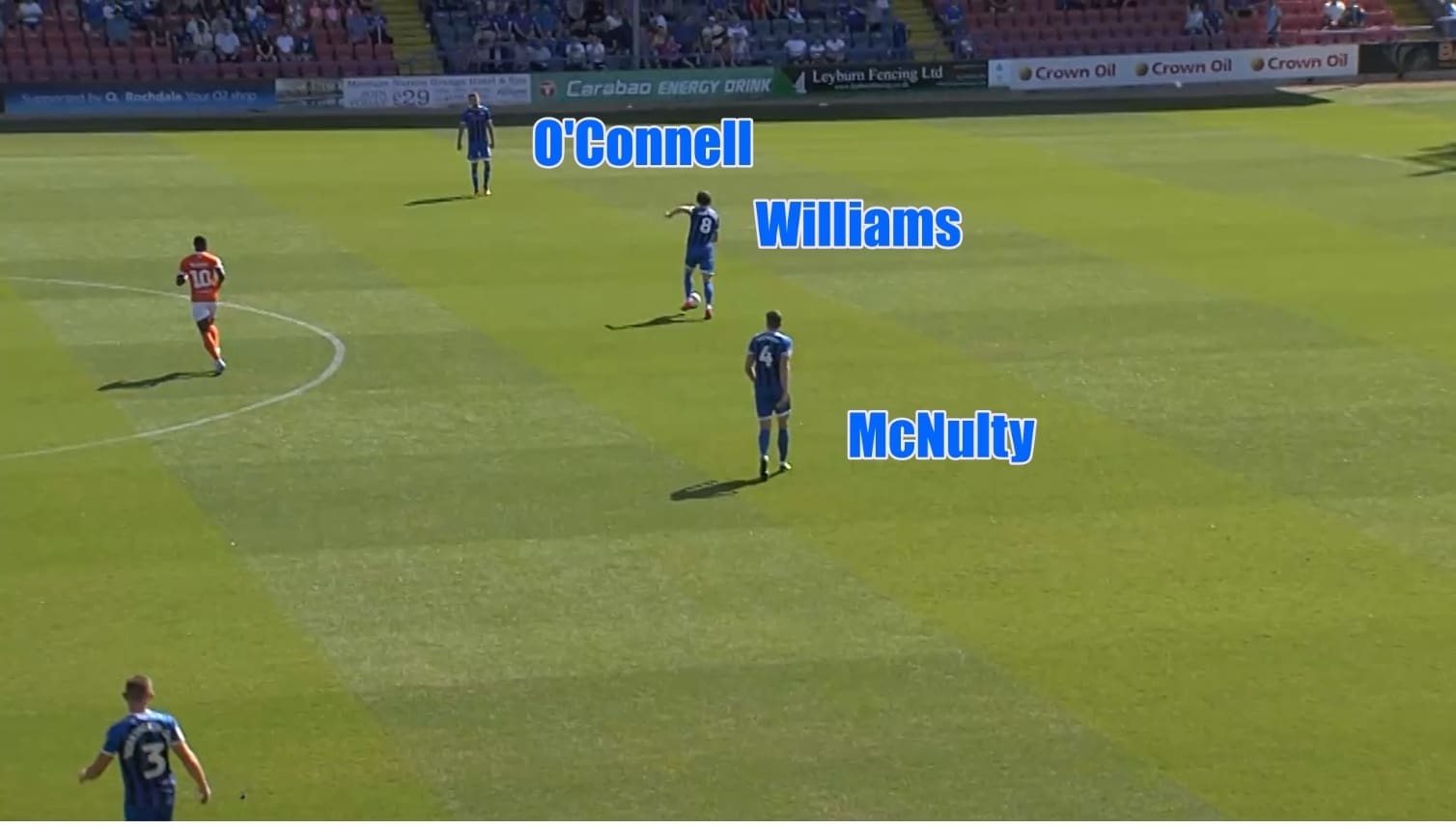
Such is their aptitude at keeping the ball within their defence, the onus is then on their midfielders to create space in order to receive the ball within and look to move the ball up the pitch. They did so here by making the pitch as wide as possible and occupying various vertical passing lanes in order to give the man on the ball a variety of options, and also to pull the Blackpool midfield as wide as possible apart so that spaces could be created for attackers to roam within.
As can be seen in the image below, Callum Camps is operating as a single pivot in the centre of the pitch, with nearby support from Stephen Dooley. Ollie Rathbone and substitute Rekeil Pyke (on for Ryan) are on the extremities of the field, situated right on the touchline in order provide width to the play and, in turn, create larger spaces for Camps (and Dooley should he get on the ball) to operate within. The positioning of Rathbone and Pyke are crucial here, as their presence out wide means that the Blackpool defenders must take into account their wide location, and thus alter their position accordingly in order to compensate. This alteration in moving wider is what creates larger spaces for the central players to operate within, and thereby increase the chances of creating goal-scoring opportunities.
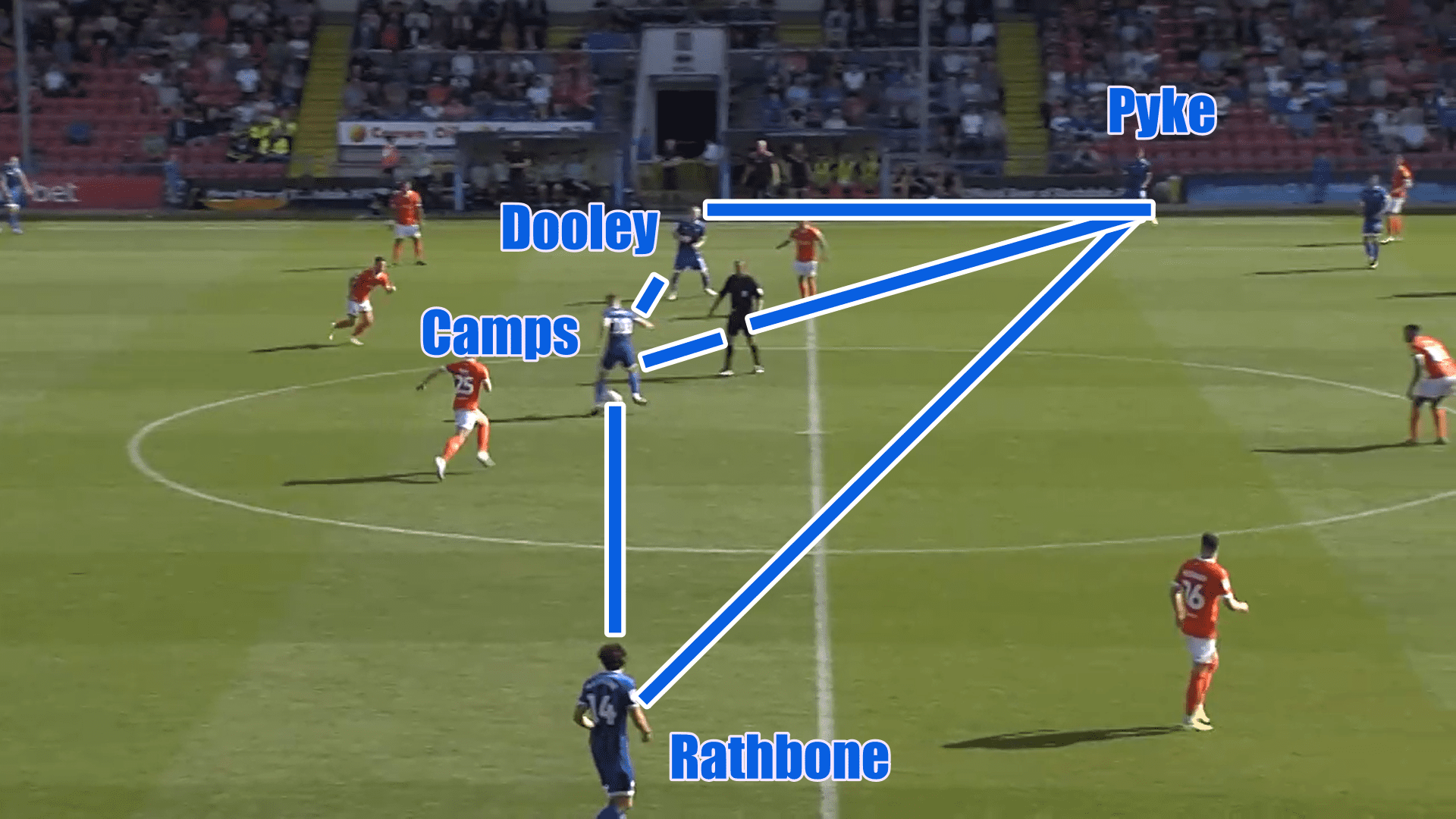
Blackpool content to sit off – initially
The chosen tactic employed by Grayson was for his forwards to sit off the Rochdale defence when out of possession. This was to try and congest the middle of the pitch and thus make it harder for Rochdale’s attackers to find space. They operated within a medium block, and it was the job of Gnanduillet and Kaikai to screen any passes into the midfield as opposed to pressing the Rochdale players to try and force them into mistakes. The pair would slide across within the channel highlighted in the below image, trying to block off any passes into midfield.
However, despite initially appearing content to sit off Rochdale, they did look to go and engage them when in the defensive transition in order to try and prevent Dale from advancing up the pitch quickly. Within transition, Blackpool hunted as a pack to try and win the ball back quickly, as can be seen below. However, they had to have discipline when doing so in order to ensure they did not lose their defensive solidity.
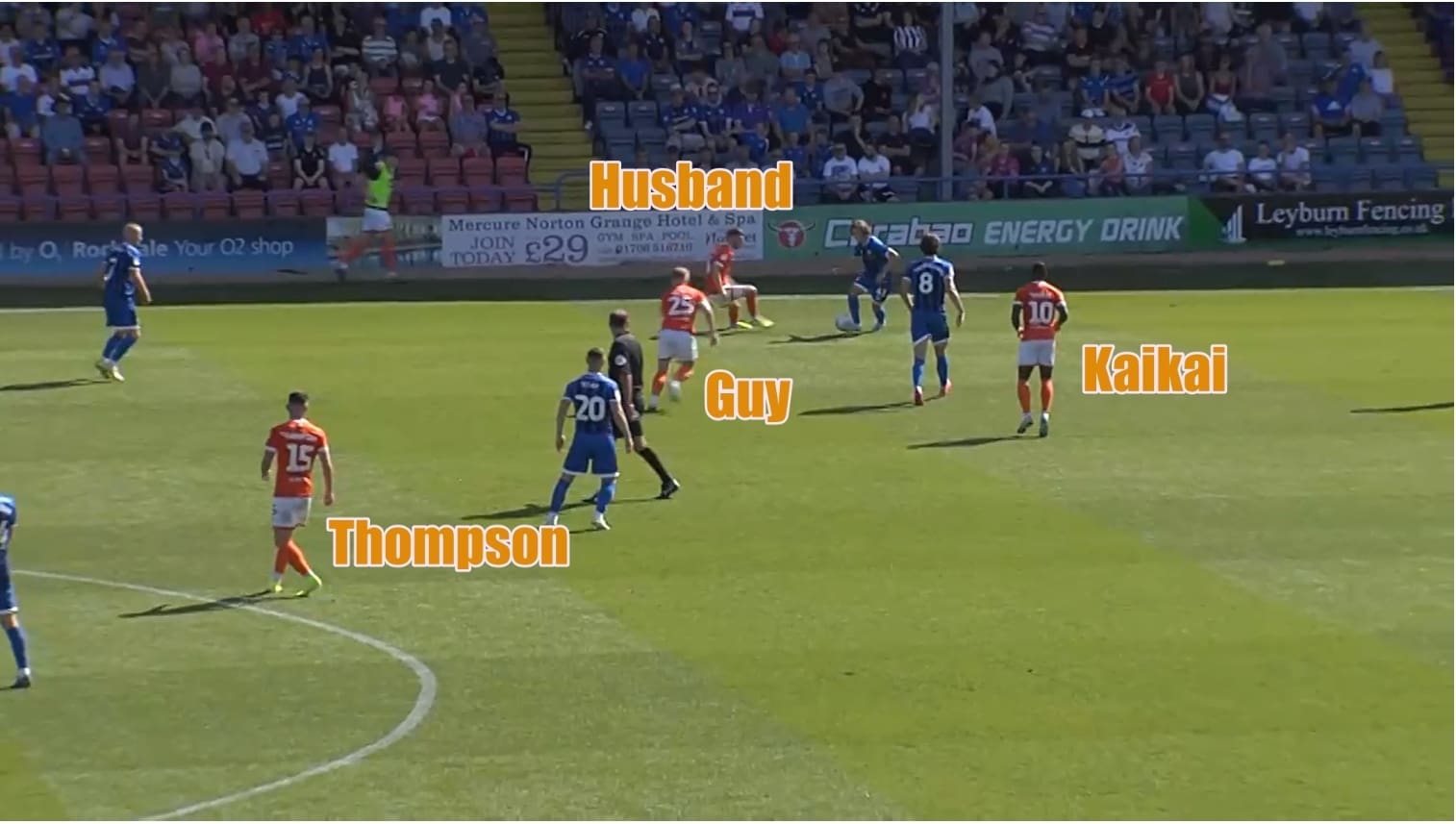
In the above image, they are trying to pin Rochdale in and not allow them to play out, with four players in close proximity of the man on the ball as they try to regain possession. However, in the below graphic, it can be seen that Jay Spearing has joined the press.
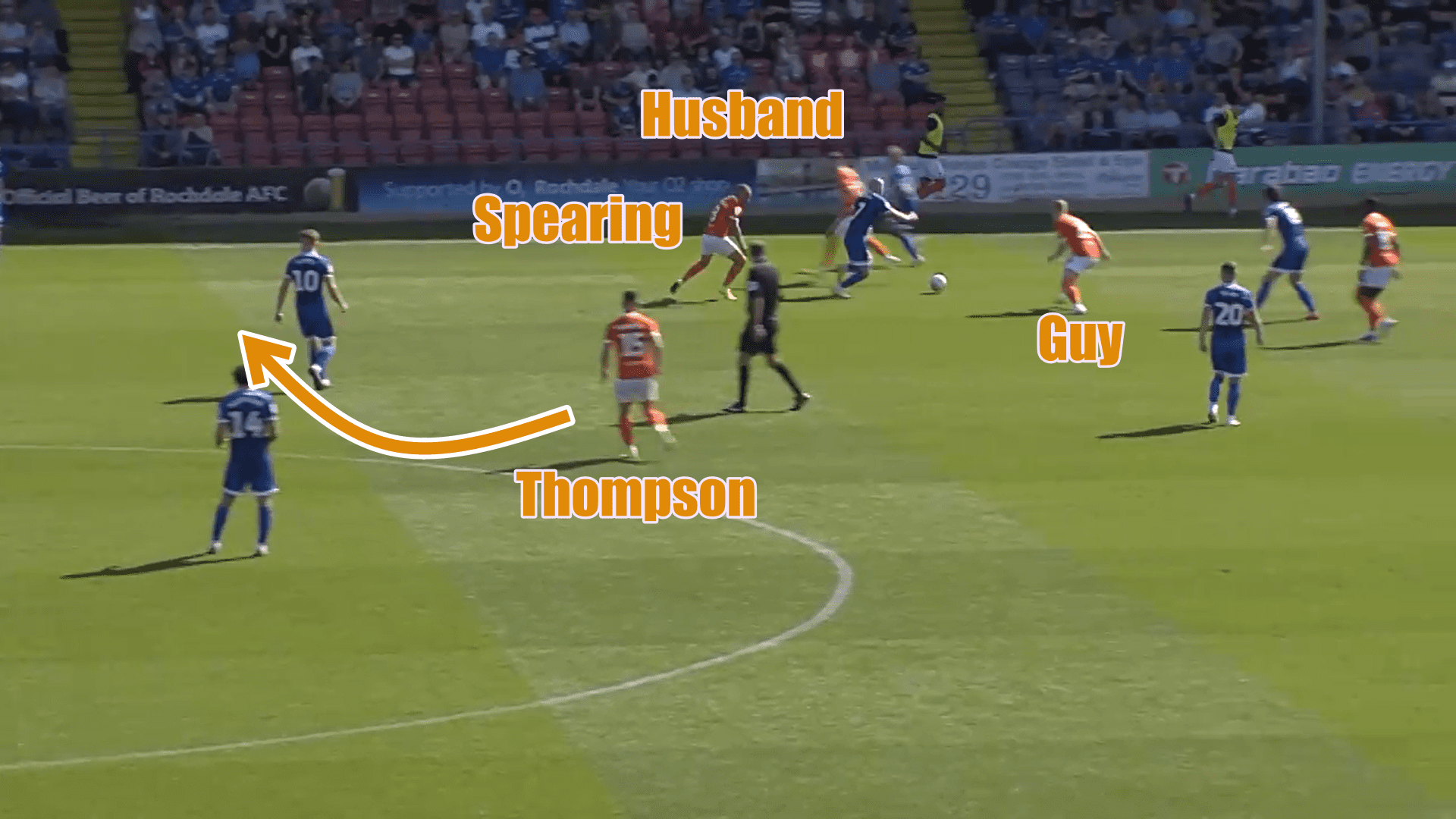
Upon doing so, fellow central midfielder Jordan Thompson notices this and, recognising that both of his central midfielder colleagues (Spearing and Guy) have advanced in order to try and win the ball back, he instantly retreats behind Spearing and goalside of Camps (number ten). This is so that he is deepest-most midfielder and can offer protection should Rochdale bypass their press.
Aggressive right-hand side
Such is the makeup of Blackpool’s team, with Turton – a full-back by trade – operating as a right-sided central defender within a three, they are naturally inclined to be able to offer a greater threat on this side of the pitch. They clearly looked at doing so here, with Turton operating almost as an orthodox full-back and wing-back Liam Feeney taking up the positions of an orthodox winger.
When out of possession, Feeney would be situated as a normal winger would and so transforming his team into somewhat of a 4-4-2/4-4-1-1 formation, as can be seen below through the genesis of a flat bank of four.
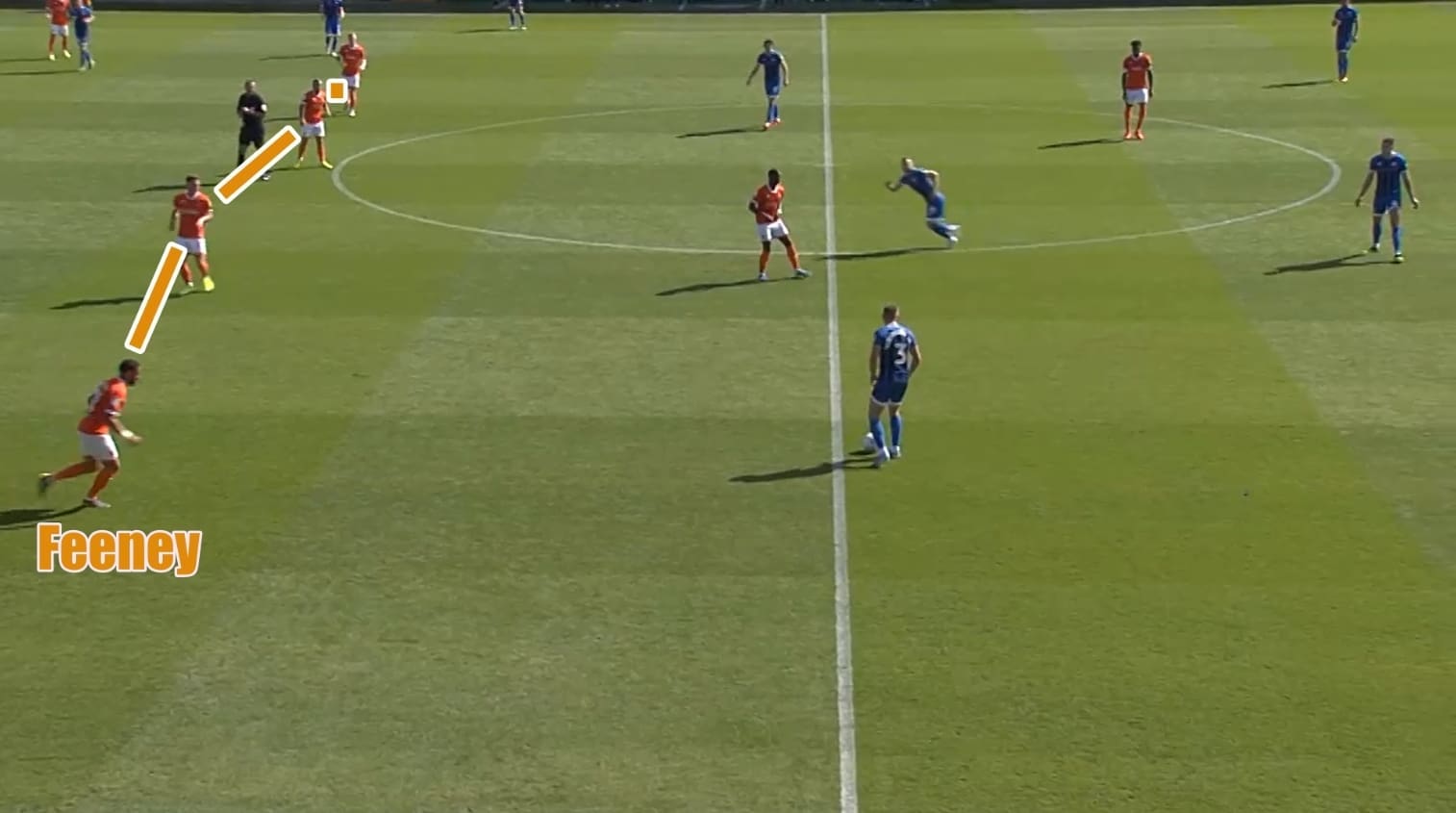
Similarly, when they were on the ball, he was very offensive-minded – as would be expected from a player who has spent almost the entirety of his ten-year Football League career operating as an out-and-out winger. Seemingly, he was not worried by the potential defensive responsibilities should his team lose the ball. The below image is an occasion of such, where he is right on the shoulder of the full-back and looking to run in behind – an act associated with a winger as opposed to a wing-back.
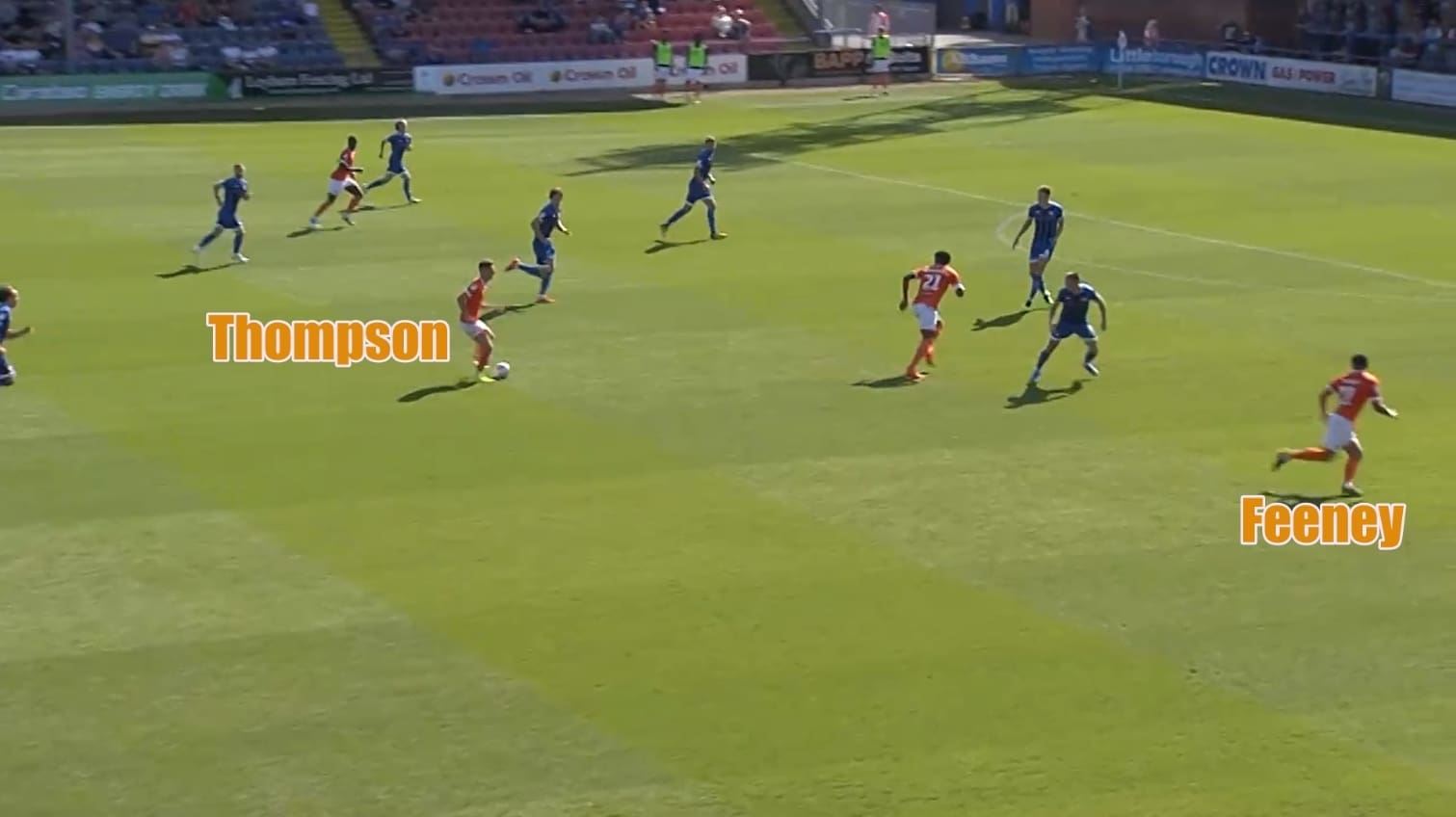
The support given to him by Turton was akin to that offered in a relationship between a full-back and the winger in front of him, as opposed to that within a wing-back and a central defender (unless the team involved is Sheffield United). It is evidenced below with Turton’s support of Feeney, just how committed the defender was to assisting his teammate as they looked to target the left-hand side of Rochdale’s defence.
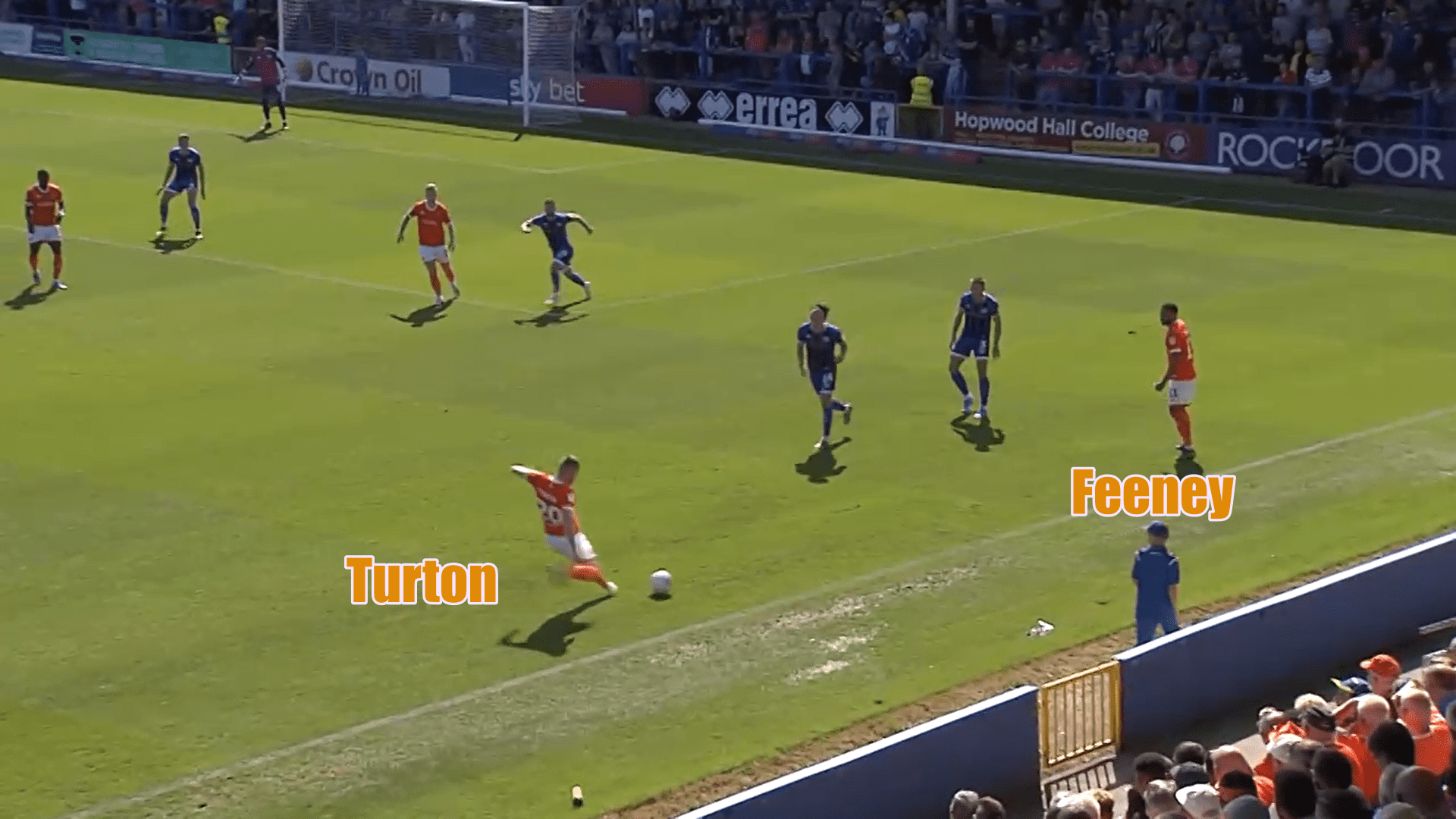
Conclusion
It was an intriguing tactical battle at Spotland, between two sides who could well be dark horses for a place in the higher echelons of the division come May. They are both committed to playing a good brand of football and look well-equipped for a crack at pushing for the play-off places in League One. A draw was arguably the fairest result on the day, and both teams should be quietly confident of their chances moving forward for the rest of the season.

If you love tactical analysis, then you’ll love the digital magazines from totalfootballanalysis.com – a guaranteed 100+ pages of pure tactical analysis covering topics from the Premier League, Serie A, La Liga, Bundesliga and many, many more. Buy your copy of the August issue for just ₤4.99 here.

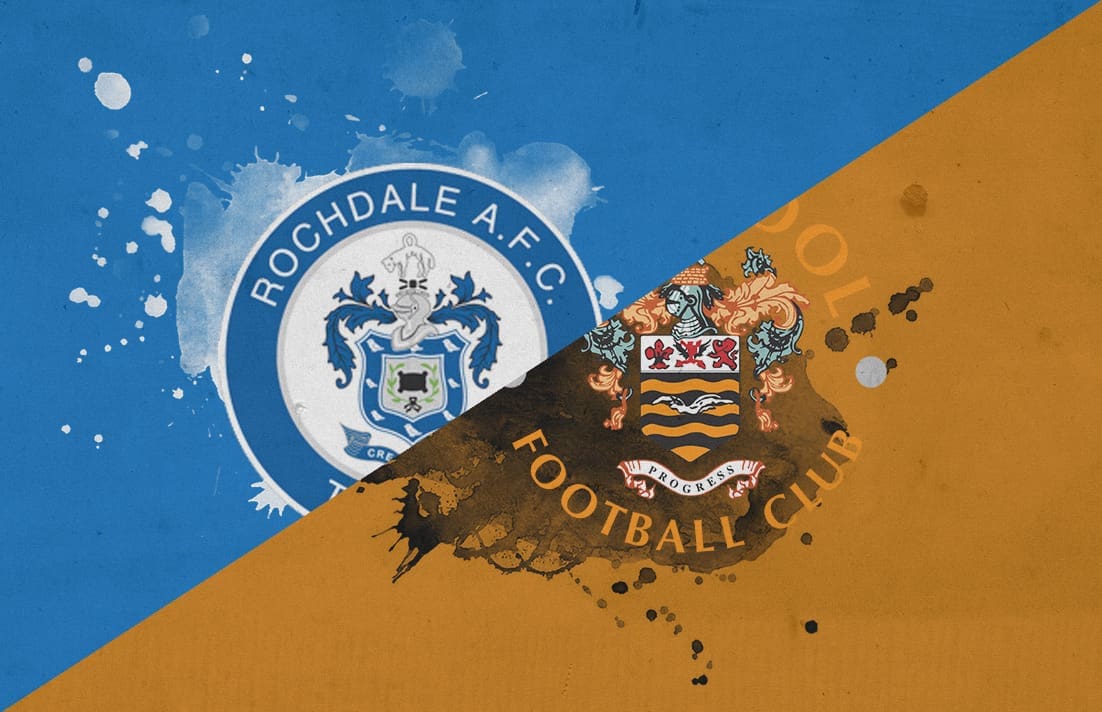




Comments